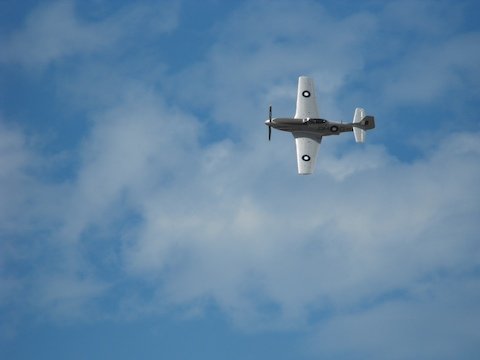The Royal Australian Air Force turns 90 today. It was officially formed as an independent service out of the old Australian Flying Corps on 31 March 1921 (making it three years less one day younger than the Royal Air Force). At first it was just the Australian Air Force: it didn’t get the Royal prefix until August, thus becoming the familiar RAAF (usually pronounced ‘raff’).
Why did Australia plump for an independent air arm? It went very early for this: of the other Dominions, still largely dependent on Britain for defence, Canada waited until 1924, New Zealand until 1934 and South Africa not until 1951 1920. The major powers were similarly unhurried: Italy’s air arm went independent in 1923 but France waited until 1933; the United States and Japan didn’t do so until after the Second World War.
According to Alan Stephens, The Royal Australian Air Force (South Melbourne: Oxford University Press, 2001), the prime minister, Billy Hughes, was particularly keen on aviation and pushed things along quickly. But there was no strategic theory of independent air power underpinning the precise form this would take. There was little concern about strategic bombing, hardly surprising as the arrival of an aeroplane from anywhere was front page news and potential enemies were many thousands of miles away. So the new air force was intended to be devoted to co-operation with the army and the navy, in support of Imperial defence and the Singapore strategy.
Interservice rivalry and finance were key to the RAAF’s actual form. With limited funds available, a single service had the advantage of efficiency, avoiding duplication in flying schools, aircraft repair organisations and other overheads. It also meant that neither senior service would have to see its rival have control over the lion’s share of aviation resources. They were happy to see a junior, weak organisation with little real independence, which could be relied upon to support them as needed.
One welcome and immediate result of the new service was jobs, as this list in the Mercury of 31 March shows. (Though there were complaints from ex-AFC men about the pay rates and conditions of employment.) Interestingly, among the usual propeller makers, cooks, machinists and so on, the RAAF declared that it had need of airship riggers and balloon basket makers. As far as I know, the RAAF never operated any airships (or balloons), but I would guess the idea would have been to use them for maritime reconnaissance and anti-submarine warfare.
Otherwise, the formation of the RAAF seems to have excited little interest in the in the Australian press (the most informative article I could find was from the Western Argus of 21 March). The British press paid even less attention: I found nothing in The Times, the Guardian or the Observer, and only one brief article in the 24 March issue Flight. Which strikes me as a bit odd, though perhaps it reflects the insubstantial nature of the shadow of the bomber (and military aviation in general) in Britain during the immediate post-war period.
So: many happy returns, RAAF — at least until the end of war!
![]() This work is licensed under a Creative Commons Attribution-NonCommercial-NoDerivatives 4.0 International License.
Permissions beyond the scope of this license may be available at http://airminded.org/copyright/.
This work is licensed under a Creative Commons Attribution-NonCommercial-NoDerivatives 4.0 International License.
Permissions beyond the scope of this license may be available at http://airminded.org/copyright/.




One minor correction: The SAAF was founded in 1920 and is considered independent then. Cite: http://www.af.mil.za/about_us/history.html
Fair point, Corey. I had been thinking that as the South Africans initially had a unified defence force, it didn’t count as an independent air force; but on that basis Australia and Canada don’t have independent air forces right now! That shifts things a bit: three of the four Dominions had independent air forces within half a dozen years of the RAF’s formation, making the Empire as a whole early adopters. Simply copying the mother country or was it about pulling their weight in the Imperial context?
I will shortly have an RAAF lighter-than-air update, and of course the Canadian air force had a brief pre-existence in 1918 – not far from my old gaff at Upper Heyford, IIRC.
And here’s the RAAF balloon update promised.
I’m disappointed that you didn’t reveal the existence of a hitherto-unsuspected interwar RAAF dirigible fleet, JDK, but that’s still pretty neat. I hope the balloonists get flight pay!
On the RAAF and balloons, Neville Meaney, A History of Australian Defence and Foreign Policy, 1901-23, Volume 2: Australia and World Crisis, 1914-1923 (Sydney: Sydney University Press, 2009), 422, notes that an April 1918 plan for an Australian air force drawn up by the Army’s Chief of Staff, Major-General Legge, involved ‘the manufacture of 200 aeroplanes and 12 balloons’. This was endorsed by the Council of Defence, but later scaled back to 60 aeroplanes (which ended up coming from the Imperial Gift). Meaney doesn’t say what happened to the proposed balloons, but maybe the requirement was still there in 1921.